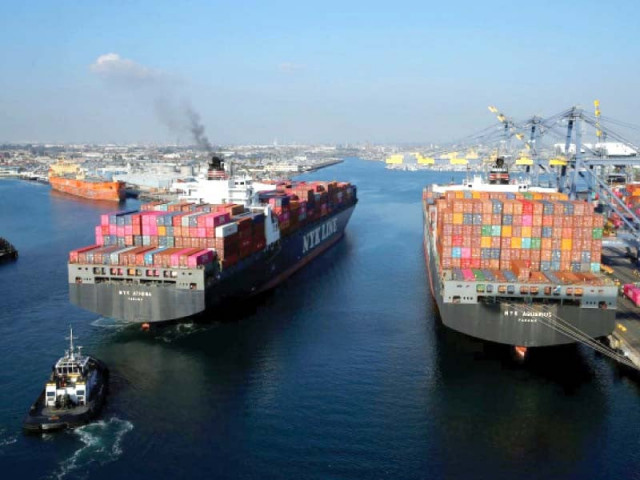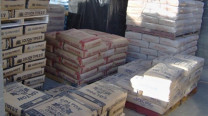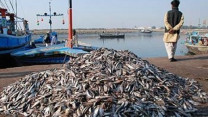Trade deficit peaks at $39.3 billion
Wide gap pushes govt to search for dollars amid reluctance to take tough decisions

Pakistan’s trade deficit crossed $39 billion in first 10 months of the current fiscal year, as the pace of increase in imports was double than the surge in exports, leaving the new government in search of dollars amid its weakening will to take tough policy decisions.
The $39.3 billion gap between exports and imports during July-April was $11 billion more than the estimate for fiscal year 2021-22, which still has two months left, showed the trade bulletin released by the Pakistan Bureau of Statistics (PBS) on Friday.
The 10-month trade deficit was $15.4 billion, or over two-thirds, more than the same period of previous year, according to the PBS.
In the last year of the previous PML-N government, the trade deficit had been recorded at $37 billion in 2018, which now at the start of its new term stands at a level that cannot be sustained due to the dearth of foreign exchange reserves.
The central bank’s foreign currency reserves were constantly on the decline and dipped further to $10.5 billion at the end of last month – not enough to cover two months of imports.
The PML-N-led coalition government has simultaneously begun the process to revive the stalled bailout package of the International Monetary Fund (IMF) and also seeks loans from Saudi Arabia and the United Arab Emirates (UAE).
However, so far it has not met with any success and deals with friendly countries and the IMF remain elusive.
The revival of the IMF programme requires the reversal of fuel subsidies that now stand at Rs102 billion per month – a decision that requires political courage but has not been exhibited by the new government.
The fate of IMF mission to Pakistan for programme revival talks hinges on the new government’s ability to take the needed measures.
Imports in July-April FY22 increased by nearly half to $65.5 billion. In absolute terms, imports grew $20.8 billion, according to the PBS.
The pace of increase in imports was not slowing down significantly, which has taken a heavy toll on the foreign exchange reserves.
The last PTI government had set the annual import target at $55.2 billion, which had been breached in the ninth month of current fiscal year.
Higher global commodity prices also contributed to the surging imports along with the country’s inability to push the second phase of industrialisation.
The central bank has introduced a cash margin requirement (CMR) for the import of goods besides curtailing consumer financing to ease the pressure on imports. But these measures did not help.
The currency was also devalued by more than 50% to make imports expensive. However, those measures were not proving effective in containing the current account deficit that had already widened to over $13 billion in the first nine months of 2021-22.
Exports increased one-fourth in the first 10 months of current fiscal year and stood at $26.2 billion against $21 billion in the same period of previous year, according to the PBS. In absolute terms, there was an increase of $5.2 billion in exports.
The Ministry of Commerce now projects that exports will touch $31 billion in the full fiscal year, which is significantly higher than the initial projections and it will be for the first time that exports will cross $30 billion.
On a yearly basis, in April 2022, imports were recorded at $6.6 billion, showing an increase of $1.4 billion, or 26%, compared to the same month a year ago, according to the PBS.
PBS stated that exports of goods stood at $2.9 billion last month, higher by nearly 30%, or $655 million, over the same month of previous year.
Consequently, the trade deficit widened nearly one-fourth year-on-year to $3.7 billion in April.
The government’s trade policies have been influenced by a few hand-picked exporters, who put pressure to take monetary benefits, keeping the export base narrow and restricted to a few sectors.
On a month-on-month basis, exports increased 3.2% to $2.9 billion in April 2022 over March 2022, showing an increase of $91 million. Imports also showed an increase of 3%, or $190 million, on a month-on-month basis.
As a result, the trade deficit widened to $3.7 billion in April, up nearly 3%, or $99 million, on a month-on-month basis.
Published in The Express Tribune, May 7th, 2022.
Like Business on Facebook, follow @TribuneBiz on Twitter to stay informed and join in the conversation.



















COMMENTS
Comments are moderated and generally will be posted if they are on-topic and not abusive.
For more information, please see our Comments FAQ